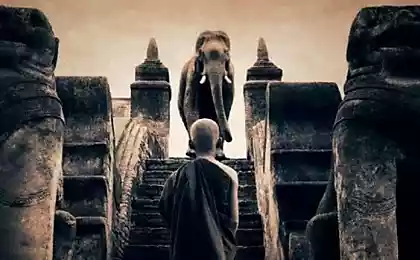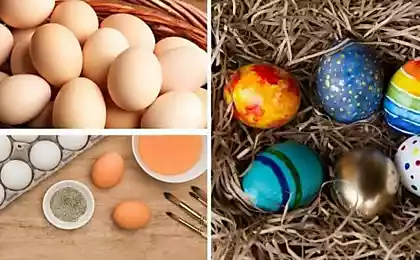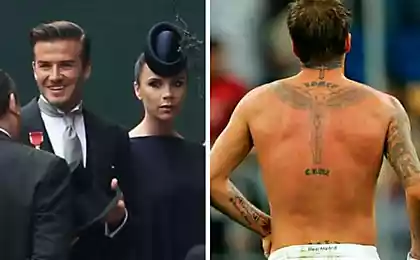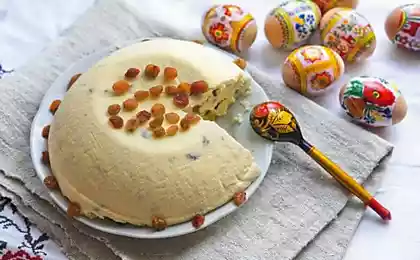482
The mystery of the shroud of Turin - or what we don't know about the Resurrection of Christ
The shroud is a large (4.3 x 1.1 m) canvas. It barely discernible image of a naked male body front and back. This burial shroud. Wrapped in it died a violent death, which was subjected to scourging. On the fabric visible wounds on the feet, wrists, chest, and back, and bruises on the head.
Authentic history of the shroud begins in the year 1347, when the count de Charny, Geoffroy (Geoffroi de Charny) put it up for worship in a small Church in the village Lirey in their possessions, about five days ' journey from Paris. It was the French knight in the service of king John (Jean) II the Good.
In 1345-1347. he participated in the March on Smyrna by the Turks. It was announced that this is the real shroud of Jesus Christ. How and when exactly he came into possession of a relic, the count announced. It was rumored that it was brought from the famous Crusader of the campaign, when it was taken and sacked Constantinople (1204). However, since then it's been half a century, it is doubtful that so much time the relic stayed under wraps or in oblivion.
Two years later, the shroud was built a stone Church and are signs of pilgrims. In the estate flowed pilgrims and money. Seeing the incident, the Bishop of Troyes has declared the relic is a fake and told to take out of the temple. It began to make the worship on Good Friday. It was a difficult time for France. Was the hundred years war, where defeat followed defeat. In addition, the outbreak of plague that killed a third of Europe's population. People were in a desperate situation and prayed for a miracle. In such a situation could appear and appear fake artifacts. Skeptics attribute to them and the Turin shroud.
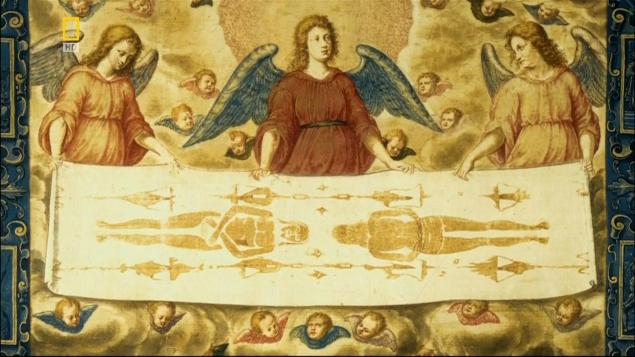
In 1418 the descendants of count de Charny forced to leave their home because of the military successes of the British. They move from place to place along with the shroud. In 1461, she was in the Holy Chapel at Chambery in Switzerland and belonged to the Dukes of Savoy. In 1532 the chapel burned down, the relic was seriously injured, the edges charred. Silver ark where she was, tense, metal drip onto the fabric. Cooled it with the ark in the water, causing stains appeared at the bend. In 1578 it was moved to Turin residence of the Savoy kings. Since it is there, gaining the name "Turin".
A huge public and scientific interest in the shroud arose in the late nineteenth century after it was first photographed. Showing pictures in the lab, photographer Secondo Pia saw that on the negative appears positive image of the relics, and details are seen better. Subsequent studies were conducted on the basis of these prints. At the same time, the scientists meticulously collected any mention of the shroud in historical sources. Access to the tissue was limited. Only in 1988, Rome agreed to radiocarbon analysis. From the edge of the shroud was cut off three pieces and sent to 3 laboratories:
The University of Arizona (USA), Oxford University (UK) and the Federal Polytechnic Institute in Zurich (Switzerland). They all came to the conclusion that the cloth was made between 1275 and 1381 he Thought it was to put an end to the disputes, however, by that time had accumulated such a number of materials that are contrary to the results of the analysis that questioned the accuracy of the results.
First and foremost it comes to the composition of the tissue. The majority indicates that it is flax, but some say it is cotton. To determine the age and origin of matter is not the last fact. A valuable property of linen thread – resistance to rot. It is not surprising that the burial of used linen fabric. Reasonable-doubt gives way to a weaving diagonal, which came into use in the Middle ages. However, some findings suggest that in early ad, this weaving was used for very expensive fabrics: silk and linen. Studies show that the thread of the shroud entourage manually and the tissue is obtained on a hand loom. In the Middle ages it was popular to wheel the spinning wheel. The existence of a certain number of cotton suggests that the flax and cotton spun on one loom, and wool is a material of animal origin – according to Jewish tradition was supposed to weave separately. Interested in a subtlety of the alleged falsificator?
In 1973, a Swiss criminologist Max Frei using the masking tape removed the dust samples from the shroud and studied them under a microscope. He said the discovery of the remains of seeds and pollen of plants growing only in Israel and Turkey. Skeptics, however, do not recognize these findings credible, pointing out a mistake (or deliberate lie) in the history of fake Hitler diaries, which Frey called to conduct a graphological analysis, recognized real. The crime scene unit examined the image of the body. Here are their insights: a man died of suffocation. 12 hours before that two soldiers struck him on the back flagrum Roman (flagrum taxillatum — "the scourge of terrifying", a short whip with a forked strips and wheel weights on the ends) – the blood had to be baked. The right shoulder of the trail – as if it fell heavy timber. My knees smashed up from falling on the ground. Wrists and feet are a through wounds. Blood ran down his hands down. The appearance of blood spots and bruising corresponds to the physical properties of the liquid. Hardly medieval artist would portray them so perfectly. Besides the body on the shroud is naked, but Christ was always depicted in a loincloth. It is logical to assume that the artist would follow the Canon. In addition, the image is flat, the fabric is not impregnated with the colors, if the image printed on it.

I'd like to believe in the authenticity of. However, the Evangelist says about the shroud and about the Board, the former on the head of Christ, alone (John 20:3-7). How to relate to this testimony? Besides, would the apostles to take the shroud, if they were of their risen Master? Note that the Jews were very strict in matters of ritual purity: the touch of the clothes of the dead were desecrated. Why nothing is known about relics until the XIV century?
And at the same time there is no answer to the question about how the image got on the cloth. The painting does not. Various experiments have not yielded similar results. Is unlikely to be given a definite answer. Everyone has to decide for itself, does it all on his faith. Some Christians with awe worship the Holy sepulcher, although I understand that this is not necessarily the same place as the geography of Jerusalem has changed. Others believe the excessive worship of relics. The choice everyone makes for himself, guided by his mind, heart and faith.
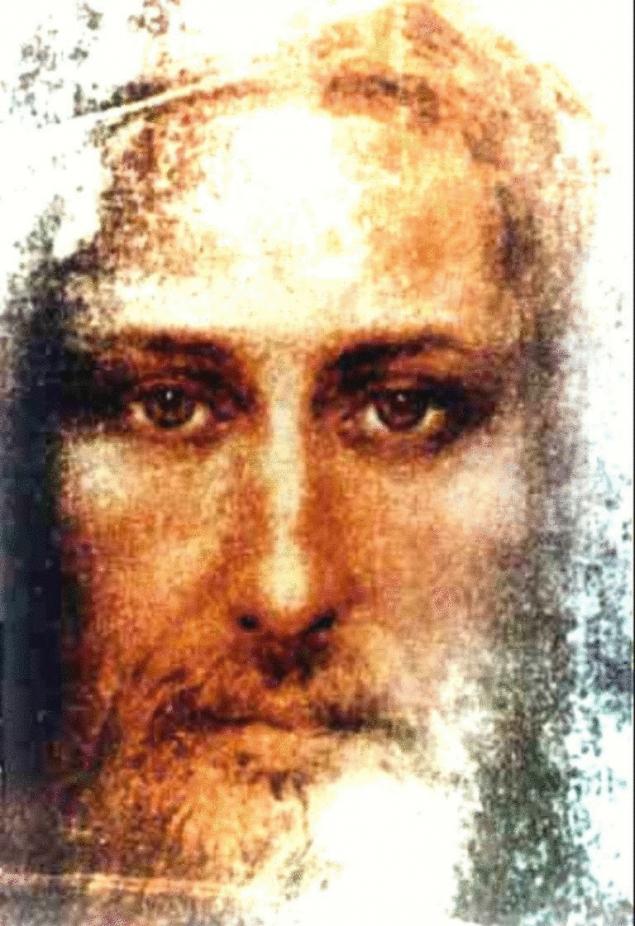
Source: www.matrony.ru/turinskaya-plashhanitsa/
Authentic history of the shroud begins in the year 1347, when the count de Charny, Geoffroy (Geoffroi de Charny) put it up for worship in a small Church in the village Lirey in their possessions, about five days ' journey from Paris. It was the French knight in the service of king John (Jean) II the Good.
In 1345-1347. he participated in the March on Smyrna by the Turks. It was announced that this is the real shroud of Jesus Christ. How and when exactly he came into possession of a relic, the count announced. It was rumored that it was brought from the famous Crusader of the campaign, when it was taken and sacked Constantinople (1204). However, since then it's been half a century, it is doubtful that so much time the relic stayed under wraps or in oblivion.
Two years later, the shroud was built a stone Church and are signs of pilgrims. In the estate flowed pilgrims and money. Seeing the incident, the Bishop of Troyes has declared the relic is a fake and told to take out of the temple. It began to make the worship on Good Friday. It was a difficult time for France. Was the hundred years war, where defeat followed defeat. In addition, the outbreak of plague that killed a third of Europe's population. People were in a desperate situation and prayed for a miracle. In such a situation could appear and appear fake artifacts. Skeptics attribute to them and the Turin shroud.

In 1418 the descendants of count de Charny forced to leave their home because of the military successes of the British. They move from place to place along with the shroud. In 1461, she was in the Holy Chapel at Chambery in Switzerland and belonged to the Dukes of Savoy. In 1532 the chapel burned down, the relic was seriously injured, the edges charred. Silver ark where she was, tense, metal drip onto the fabric. Cooled it with the ark in the water, causing stains appeared at the bend. In 1578 it was moved to Turin residence of the Savoy kings. Since it is there, gaining the name "Turin".
A huge public and scientific interest in the shroud arose in the late nineteenth century after it was first photographed. Showing pictures in the lab, photographer Secondo Pia saw that on the negative appears positive image of the relics, and details are seen better. Subsequent studies were conducted on the basis of these prints. At the same time, the scientists meticulously collected any mention of the shroud in historical sources. Access to the tissue was limited. Only in 1988, Rome agreed to radiocarbon analysis. From the edge of the shroud was cut off three pieces and sent to 3 laboratories:
The University of Arizona (USA), Oxford University (UK) and the Federal Polytechnic Institute in Zurich (Switzerland). They all came to the conclusion that the cloth was made between 1275 and 1381 he Thought it was to put an end to the disputes, however, by that time had accumulated such a number of materials that are contrary to the results of the analysis that questioned the accuracy of the results.
First and foremost it comes to the composition of the tissue. The majority indicates that it is flax, but some say it is cotton. To determine the age and origin of matter is not the last fact. A valuable property of linen thread – resistance to rot. It is not surprising that the burial of used linen fabric. Reasonable-doubt gives way to a weaving diagonal, which came into use in the Middle ages. However, some findings suggest that in early ad, this weaving was used for very expensive fabrics: silk and linen. Studies show that the thread of the shroud entourage manually and the tissue is obtained on a hand loom. In the Middle ages it was popular to wheel the spinning wheel. The existence of a certain number of cotton suggests that the flax and cotton spun on one loom, and wool is a material of animal origin – according to Jewish tradition was supposed to weave separately. Interested in a subtlety of the alleged falsificator?
In 1973, a Swiss criminologist Max Frei using the masking tape removed the dust samples from the shroud and studied them under a microscope. He said the discovery of the remains of seeds and pollen of plants growing only in Israel and Turkey. Skeptics, however, do not recognize these findings credible, pointing out a mistake (or deliberate lie) in the history of fake Hitler diaries, which Frey called to conduct a graphological analysis, recognized real. The crime scene unit examined the image of the body. Here are their insights: a man died of suffocation. 12 hours before that two soldiers struck him on the back flagrum Roman (flagrum taxillatum — "the scourge of terrifying", a short whip with a forked strips and wheel weights on the ends) – the blood had to be baked. The right shoulder of the trail – as if it fell heavy timber. My knees smashed up from falling on the ground. Wrists and feet are a through wounds. Blood ran down his hands down. The appearance of blood spots and bruising corresponds to the physical properties of the liquid. Hardly medieval artist would portray them so perfectly. Besides the body on the shroud is naked, but Christ was always depicted in a loincloth. It is logical to assume that the artist would follow the Canon. In addition, the image is flat, the fabric is not impregnated with the colors, if the image printed on it.

I'd like to believe in the authenticity of. However, the Evangelist says about the shroud and about the Board, the former on the head of Christ, alone (John 20:3-7). How to relate to this testimony? Besides, would the apostles to take the shroud, if they were of their risen Master? Note that the Jews were very strict in matters of ritual purity: the touch of the clothes of the dead were desecrated. Why nothing is known about relics until the XIV century?
And at the same time there is no answer to the question about how the image got on the cloth. The painting does not. Various experiments have not yielded similar results. Is unlikely to be given a definite answer. Everyone has to decide for itself, does it all on his faith. Some Christians with awe worship the Holy sepulcher, although I understand that this is not necessarily the same place as the geography of Jerusalem has changed. Others believe the excessive worship of relics. The choice everyone makes for himself, guided by his mind, heart and faith.

Source: www.matrony.ru/turinskaya-plashhanitsa/

